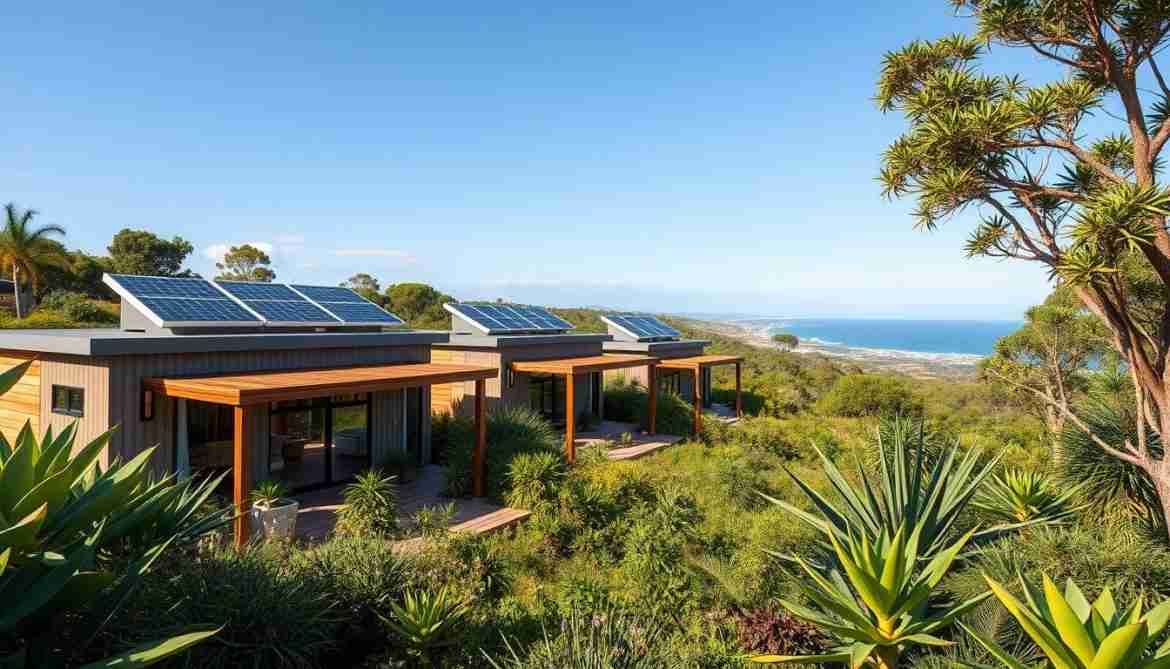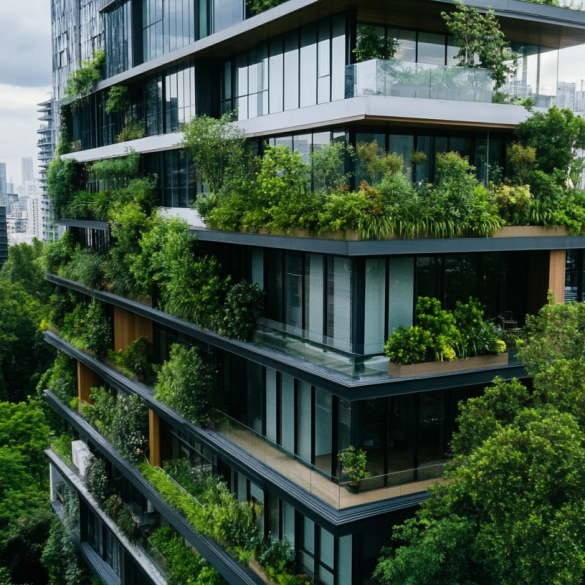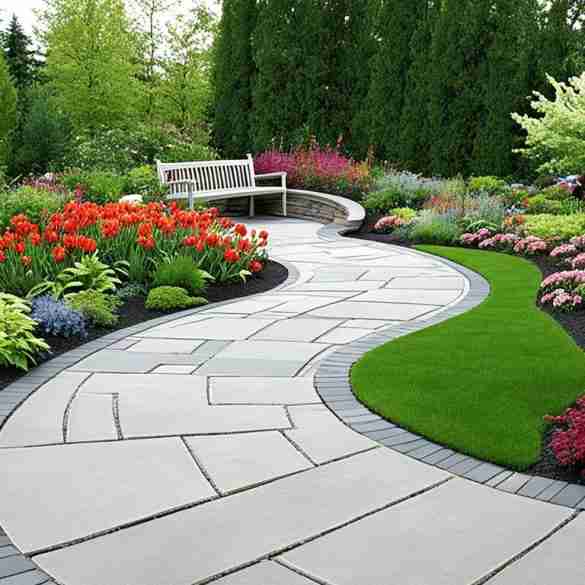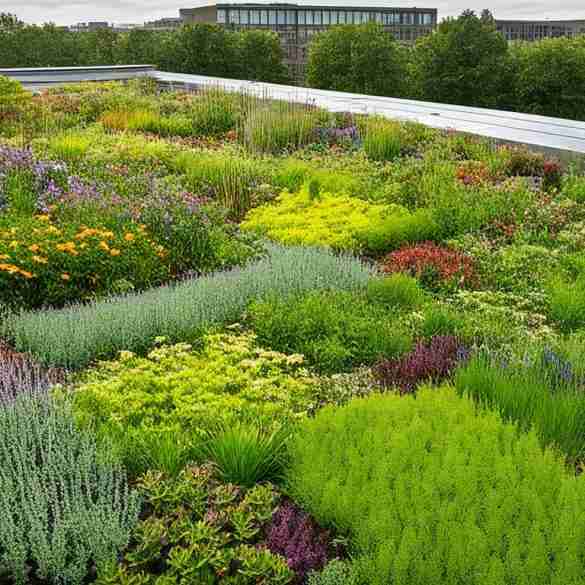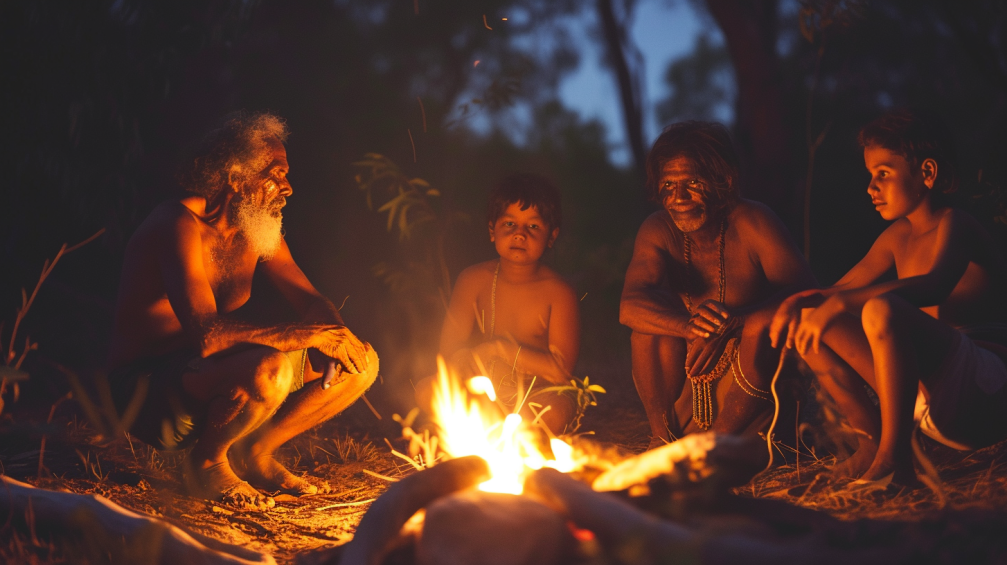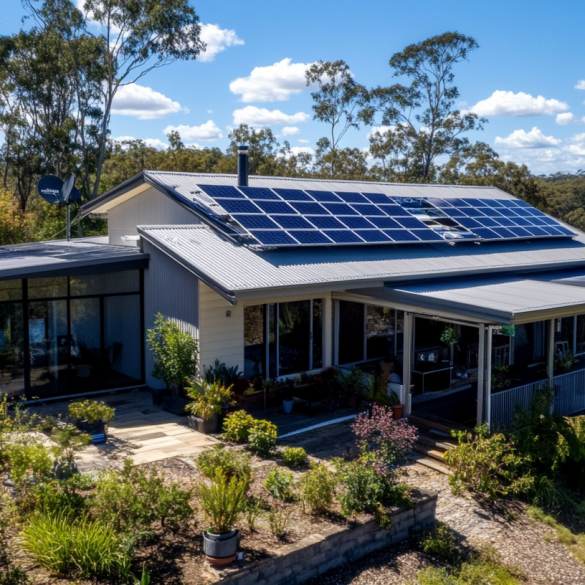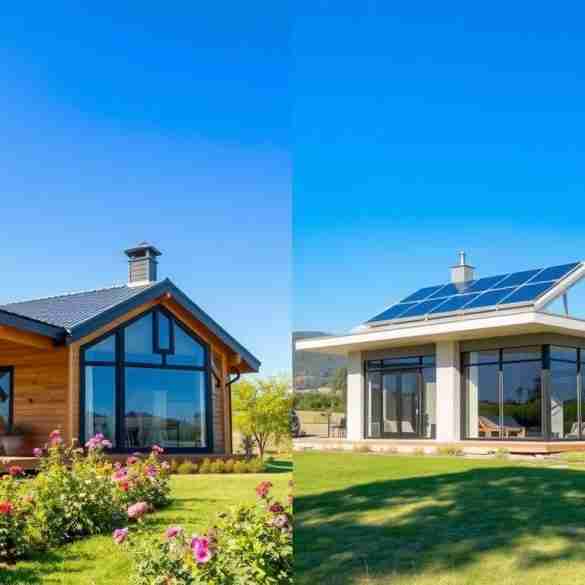Did you know over 215 modular social homes are done or in the works in Queensland? This shows a big move towards sustainable housing in the Sunshine State. The future of Queensland’s Affordable Eco-friendly Modular Homes is looking greener than ever.
The Queensland government is taking big steps to solve the housing shortage. They plan to build 600 modular homes as part of their Homes for Queenslanders plan. This goal is to add one million homes, including 53,500 social ones, by 2046.
So, why are these prefabricated green buildings so attractive? They take only three months to build on-site, unlike a year for traditional homes. This speed is key in meeting the demand for affordable housing.
Queensland’s focus on eco-friendly modular homes is clear in its Modern Methods of Construction (MMC) program. This program plans to make and deliver over 150 modern homes by mid-2024. It focuses on quicker building and less disruption from weather, making it a big step for sustainable housing.
Table of Contents
The Growing Demand for Queensland Affordable Eco-friendly Modular Homes
Queensland is facing a big housing crisis. The state government has set up production facilities in Brisbane to tackle this problem. They aim to build one million homes, including 53,500 for those in need.
The need for affordable homes is everywhere in Queensland. From Coen in the north to Bedourie in the west and Gympie in the southeast. This shows we need new, innovative housing solutions fast.
Energy-efficient modular homes could be the answer. They cost 30-40% less than traditional homes. This helps with affordability and meets sustainability goals.
The construction industry is a big polluter. Modular homes can help reduce this impact. Sustainable kit homes are becoming popular, especially for seniors who want affordable, green living.
Queensland’s social housing efforts are showing good results:
- 1,949 social housing homes started by June 2020, beating the three-year goal by 249
- 1,061 homes finished by June 2020
- About 1,800 jobs created in social housing since June 2017
- 94% of homes built are one or two-bedroom, meeting 79% of high and very-high-need applicants
To make the most of modular homes, we need more funding and support. This will help overcome current challenges. It will make modular homes a key part of Queensland’s future, offering affordable, eco-friendly homes for everyone.
How Modular Construction Can Meet Queensland’s Housing Needs
Queensland is facing a big housing problem. The ‘Homes for Queenslanders’ plan wants to build 1 million homes by 2046. Modular homes are a big help, offering affordable and green living options.
Environmental Benefits of Modular Homes
Modular homes in Queensland are good for the planet. They cut down carbon emissions by 45% compared to old ways of building. This shows how green modular homes are.
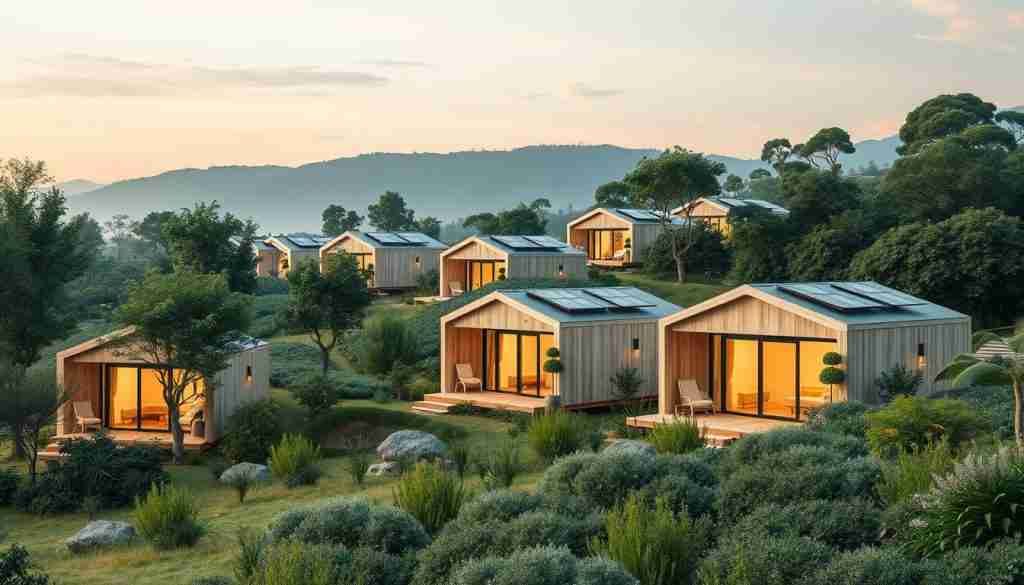
Cost-Effectiveness of Modular Homes in Queensland
Modular homes are also very affordable in Queensland. By 2025, the MMC program aims to build 600 single-story homes and 200 apartments. This fast building helps meet the urgent need for homes.
| Construction Type | Completion Time | Carbon Emission Reduction |
|---|---|---|
| Traditional | 1 year | 0% |
| Modular | 3 months | 45% |
Queensland is investing in modular homes. It has centers in Eagle Farm and Zillmere, with a third in Cairns opening soon. These places make homes and train workers, solving the labor shortage. Modular homes are making Queensland’s housing future green and affordable.
What Makes Modular Homes Eco-Friendly?
Environmental homes are becoming more popular. Modular construction is at the forefront. It offers a green way to build homes that are good for both people and the planet.
Sustainable Materials in Modular Home Construction
Modular homes use bulk materials, cutting down on waste. They are built with strong, durable materials. This ensures they last a long time.
The factory setting means materials are used just right. This reduces waste and makes the homes more sustainable.
Energy-Efficient Features in Modular Homes
Companies like Portalux focus on making homes use less energy. They use systems and materials that are good for the planet. This helps the environment and saves homeowners money on bills.
Reduced Waste in Modular Construction Processes
Building homes in a factory cut down on waste. It’s a controlled space where materials are used exactly as needed. This means less waste and a smaller environmental footprint.
Lower Carbon Footprint Compared to Traditional Homes
Modular homes are better for the environment than traditional ones. They need fewer holes in the ground, which is good for the site. Plus, they’re built faster, which means less harm to the environment.
These homes are a smart choice for those who care about the planet.
| Feature | Modular Homes | Traditional Homes |
|---|---|---|
| Construction Time | 14 weeks | 6-12 months |
| Waste Reduction | Significant | Variable |
| Energy Efficiency | High | Variable |
| Site Impact | Low | Higher |
How Modular Homes Can Address the Housing Crisis in Queensland
Queensland’s housing crisis needs new ideas. Modular homes are a good answer. They are affordable and good for the planet. People are starting to use them all over the state.
Faster Construction Times
Modular homes in Queensland are built fast. They can be ready in just 12 to 14 weeks. This is much quicker than old ways.
Companies like EcoLiv can finish a home in about 20 weeks. This quick building helps solve the housing problem fast.
Scalability for Large Housing Projects
Modular homes in Queensland work well for big projects. They are built in a tenth of the time and cost 40% less. This makes them perfect for big housing plans.
The state is working on making more prefabricated homes. This shows the growth potential in this area.
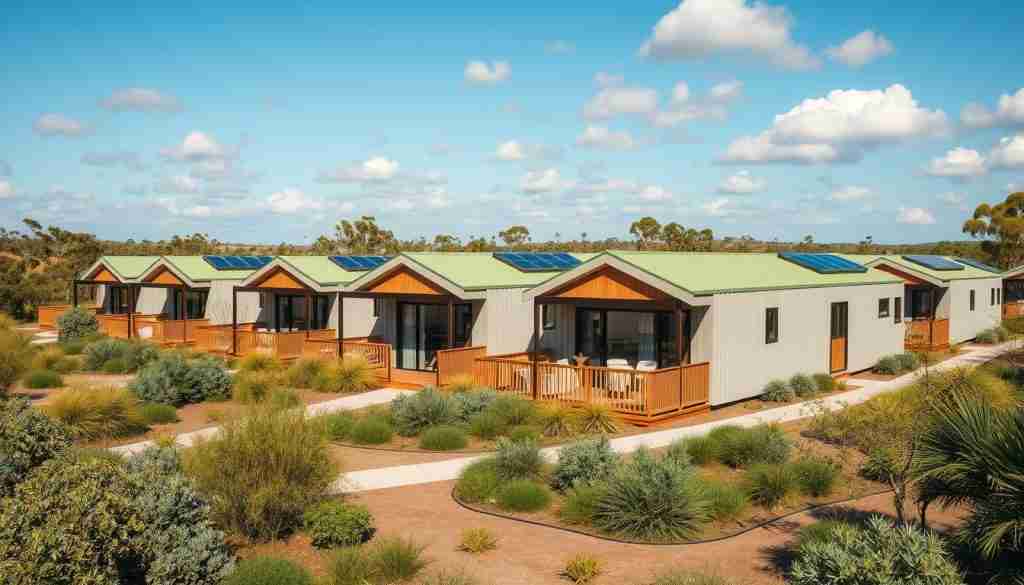
Flexibility in Design
Modular homes fit well in cities and the countryside. The Stafford Heights project won awards for its design. This shows how versatile these homes can be.
Affordability for Low-Income Households
Modular homes are cheaper than traditional houses. They start at about $500,000 for a two-bedroom. This makes them affordable for many.
They also save money over time. Thanks to smart design, they can cut costs by up to 30%.
As Queensland faces a housing shortage, modular homes are a good solution. They are fast, affordable, and good for the planet. This makes them a great choice for the state’s housing needs.
Benefits of Eco-Friendly Modular Homes for Queensland’s Environment
Eco-friendly modular homes are changing Queensland’s homes. They are good for the environment and for people living there.
Contribution to Reducing Queensland’s Greenhouse Gas Emissions
Modular homes cut down greenhouse gas emissions. They are built offsite, which is 30-40% cheaper than traditional homes. This means they use less energy and have a smaller carbon footprint.
Preserving Natural Resources through Efficient Building Practices
Modular homes waste less and use resources better. In Queensland, Plus Architecture makes homes faster and cheaper than usual.
Encouraging Sustainable Living Communities
Modular homes help create green communities. Tiny houses in Queensland have solar panels and collect rainwater. This lets people live green and cut down on waste.
Modular Homes’ Role in Climate Resilience
Modular homes are key for dealing with climate change. They can be built fast for disaster relief. Plus, they fit well in Queensland’s different climates, from tropical to urban.
| Feature | Benefit |
|---|---|
| Solar Panels | Reduced energy bills and carbon footprint |
| Rainwater Harvesting | Water conservation in drought-prone areas |
| Efficient Design | Lower maintenance costs and resource use |
| Rapid Assembly | Quick housing solutions post-disaster |
How Modular Homes Reduce Building Costs
Modular homes are changing the housing world. They offer homes that are both green and affordable. Let’s see how they cut down on building costs.
Lower Labor Costs Through Prefabrication
Prefabrication is a big win for saving on labor. Modules are built in factories, not on-site. This means less time and money spent on construction.
Less Material Waste, Leading to Cost Savings
Modular homes also save on materials. They are built with precision, wasting less. This is good for your wallet and the planet.
Economies of Scale in Large-Scale Modular Housing
Big modular projects save money too. Making more homes at once lowers the cost. This is great for developers wanting to build affordable eco-friendly living communities.
Shorter Construction Time, Saving on Financing Costs
Time is money in building. Modular homes are quick to make and put together. This means you save on loan costs, unlike traditional homes.
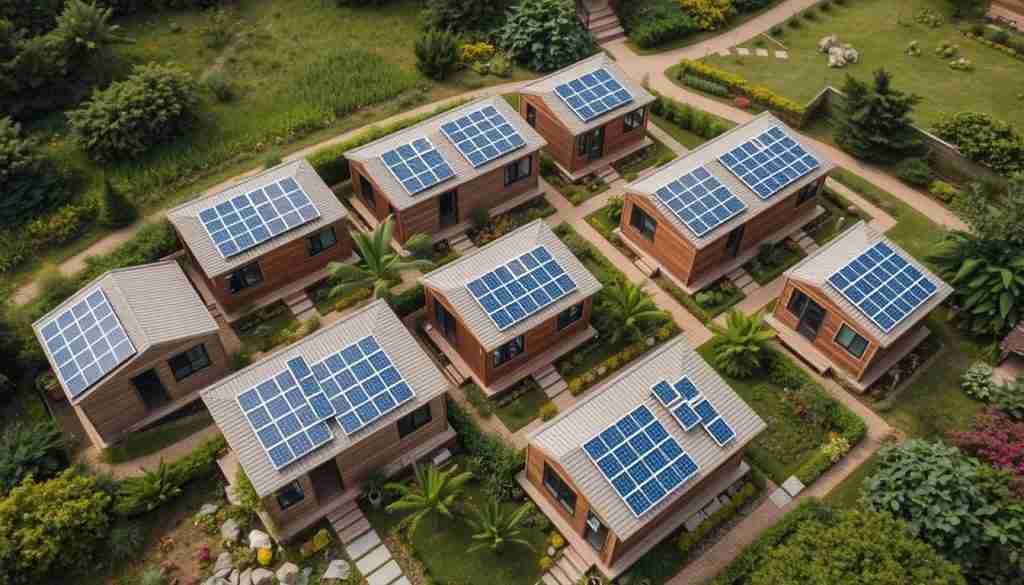
| Aspect | Traditional Home | Modular Home |
|---|---|---|
| Construction Time | 6-12 months | 3-4 months |
| Labor Costs | Higher | Lower |
| Material Waste | 10-15% | 2-3% |
| Carbon Emissions | Baseline | Up to 45% reduction |
Choosing modular homes is smart. You save money and help the planet. Modular homes are efficient, green, and affordable.
What Are the Financial Incentives for Building Eco-Friendly Modular Homes in Queensland?
Queensland is moving towards affordable, eco-friendly modular homes. The state has a $2.8 billion plan for housing. This plan supports sustainable homes, offering financial help.
Government Grants and Subsidies
The Queensland government supports sustainable homes. They might offer grants or subsidies for modular homes. This could make eco-friendly homes more affordable for people.
Tax Benefits for Energy-Efficient Construction
Energy-efficient homes get tax breaks. Modular homes, being eco-friendly, might qualify too. This could mean lower taxes or rebates on green appliances.
Financing Options for First-Time Homebuyers
First-time buyers might get special loans for eco-friendly homes. Banks see the value in green homes. This could mean lower interest rates or easier payments.
Incentives for Developers
Developers of green communities might get perks. They could get faster approvals or lower fees. This helps increase the number of green homes in Queensland.
Modular homes offer more than just upfront savings. They cost less to build and keep up. They also save money on bills over time. Companies like Ecoliv and Home Life Pods offer homes for under $200K and $150K. These options show the potential of prefabricated housing to meet Queensland’s needs.
Comparing Eco-Friendly Modular Homes with Traditional Housing
Modular homes are better than traditional houses in many ways. Let’s see how they compare in important areas.
Durability and Longevity
Modular homes are built to last. They use top-quality materials and precise methods in factories. This makes them strong against harsh weather.
Maintenance Costs
Modular homes need less upkeep. Their factory-made quality is consistent. Ecoliv homes, for example, can save up to 30% on living costs.
Time Efficiency
Building modular homes is faster. Ecoliv prefab homes are ready in 16 weeks. Traditional homes take 4-12 months, saving up to 40% time.
Environmental Impact
Modular homes are better for the planet. They can cut carbon emissions by up to 45%. Using sustainable materials can save up to 23 tonnes of carbon per home.
| Aspect | Modular Homes | Traditional Homes |
|---|---|---|
| Construction Time | 16 weeks | 4-12 months |
| Waste Reduction | Up to 80% | Standard |
| CO2 Emission Reduction | Up to 50% | Standard |
| Living Cost Reduction | Up to 30% | Standard |
Modular homes are better in many ways. They are more sustainable, efficient, and cost-effective. As people want more eco-friendly homes, modular buildings will be key in Queensland’s housing future.
How Sustainable Modular Homes Are Designed for Queensland’s Climate
Queensland’s weather is tough for homes. But, modular homes are getting better at handling it. They’re made to fight off heat, humidity, and water issues while saving energy.
Weather-Resistant Materials for Tropical and Coastal Areas
In Queensland, homes face storms and salt spray. Modular homes use strong materials like metals and treated wood. These sustainable homes last longer, saving money and the planet.
Passive Cooling Techniques for Hot Climates
To beat the heat, homes use smart cooling methods. These include:
- Windows for airflow
- Roof overhangs for shade
- Light colors to reflect the sun
- Insulation to stay cool
These methods cut down on air conditioning use. This lowers energy costs and carbon emissions.
Solar Integration and Energy Independence
Queensland’s sun is great for homes. Many have solar panels to make their own energy. This makes homes energy-independent, saving money and the planet.
Water Conservation Systems for Drought-Prone Regions
Water is scarce in some parts of Queensland. Modular homes have systems to save water. They use rainwater and greywater and have low-flow fixtures. This helps use water wisely without sacrificing comfort.
Sustainable modular homes are a great answer for Queensland’s housing needs. They’re comfy, efficient, and good for the planet. They’re perfect for those who care about the environment.
Why Eco-Friendly Modular Homes Attract Millennials and Eco-Conscious Buyers
Eco-friendly modular homes are becoming more popular in Queensland. They mix affordability with sustainability. This makes them a great choice for those who want to live green without spending a lot.
Affordability Paired with Sustainability
Modular homes are an affordable way to start owning a property. The cost of building a home has gone up by $140,000 in 15 months. These homes offer a cheaper option.
Some places, like Assemble in Kensington, have a special deal. You can rent for five years and then buy your apartment.
Modern Design and Customization Flexibility
Eco-friendly modular homes come in many sizes. You can find everything from studio apartments to 4-bedroom houses. This meets different needs and tastes.
The modern designs and options for customization attract millennials. They want their homes to be stylish and functional.
Focus on Green Living and Reducing Ecological Footprint
These homes are built to be green. They use energy-saving features and sustainable materials. This helps reduce the ecological footprint of the residents.
Studies show homes with these features can use up to 50% less energy. This is compared to traditional houses.
Healthier Living Environments with Non-Toxic Materials
Eco-friendly modular homes use non-toxic materials. This creates a healthier living space. It’s something health-conscious millennials and eco-aware buyers care about.
They want homes that are good for their health. They look for places with clean air and less impact on the environment.
More and more projects are happening in Queensland. Over 1,500 “build-to-rent-to-own” apartments are planned. This shows that affordable eco-friendly living is a big trend in housing.
Where to Build Eco-Friendly Modular Homes in Queensland
Queensland has many places to build affordable eco-friendly modular homes. You can find great spots in cities and quiet countryside. The state is full of options for sustainable housing.
Urban vs Rural Locations: Best Areas for Modular Homes
In cities like Brisbane, modular homes are becoming more popular. They save space. Rural spots like Bundaberg, Innisfail, and Mackay also welcome these homes.
Companies like Oly Homes are known for their quality and low power bills. They’re great for city or country living.
Considerations for Local Building Regulations and Permits
Understanding local building codes is key when planning your home in Queensland. The Queensland government supports modular homes. They have centers in Eagle Farm, Zillmere, and Cairns to help.
These centers make it easier to build and place sustainable homes.
Access to Infrastructure and Public Services
Prefabulous offers homes from studios to 3-4 bedrooms. They make sure your home fits its location well. This makes modular homes perfect for Queensland.
Proximity to Sustainable Community Resources
Choose a location that supports green living. Many builders, like Prefabulous, focus on being eco-friendly. These homes can be part of big green communities.
This helps reduce carbon footprints and creates eco-friendly neighborhoods in Queensland.

